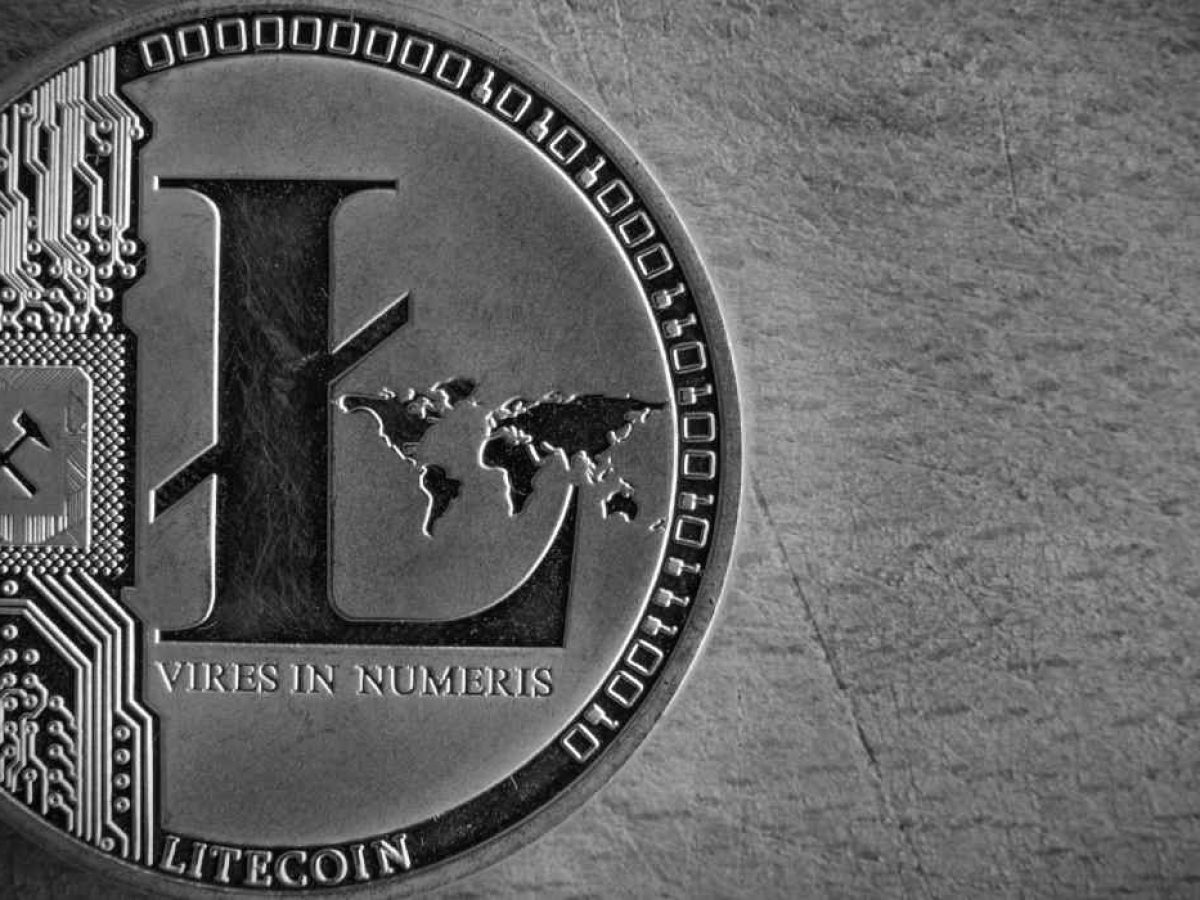Introduction
When it comes to cryptocurrencies, Bitcoin often steals the spotlight. However, there are several other cryptocurrencies that have gained popularity in recent years, including Litecoin. Created by Charlie Lee, a former Google engineer, in 2011, Litecoin is often viewed as the silver to Bitcoin’s gold. It offers faster transaction confirmations and a different hashing algorithm known as Scrypt.
Among the many aspects that make Litecoin unique, one key feature is its Genesis Hash. The Genesis Hash serves as the initial starting point for the blockchain, marking the beginning of transactions within the network. Understanding the Genesis Hash and its significance is important for anyone interested in delving deeper into the world of Litecoin and its underlying technology.
In this article, we will explore the concept of the Genesis Hash, its history, and its role in the Litecoin blockchain. We will also debunk common misconceptions surrounding the Genesis Hash and discuss its future within the ever-evolving landscape of cryptocurrencies.
So, if you’re curious about the inner workings of Litecoin and want to know where it all begins, let’s dive into the fascinating realm of the Genesis Hash.
What is Genesis Hash?
The Genesis Hash is a unique identifier that represents the first block of a cryptocurrency’s blockchain. It acts as the foundation upon which all subsequent blocks and transactions are built. In the case of Litecoin, the Genesis Hash is the starting point of its blockchain network.
The Genesis Hash is derived from a cryptographic hash function, a mathematical algorithm that takes an input and produces a fixed-size string of characters. In Litecoin, the Genesis Hash is generated using the Scrypt hashing algorithm, which differs from the SHA-256 algorithm used by Bitcoin. This algorithm provides enhanced security and helps to prevent certain types of attacks.
Each block in the Litecoin blockchain contains a reference to the previous block’s hash, establishing a chronological order of transactions. By referencing the Genesis Hash, Litecoin nodes can verify the integrity of the blockchain and ensure that all subsequent blocks are linked in the correct sequence.
The Genesis Hash is a crucial aspect of the blockchain’s security and immutability. Altering the Genesis Hash or any previous block’s hash would require immense computational power, making the Litecoin network highly resistant to tampering and malicious attacks.
Moreover, the Genesis Hash plays a pivotal role in the consensus mechanism of the blockchain. It helps nodes reach an agreement on the valid version of the blockchain, ensuring that all participants have a synchronized and consistent view of the transaction history.
Overall, the Genesis Hash serves as the fundamental building block of the Litecoin blockchain, providing a secure and reliable starting point for all subsequent transactions. Its importance lies in its ability to establish an immutable record of transactions and maintain the integrity of the entire blockchain network.
The Importance of Genesis Hash
The Genesis Hash holds significant importance in the world of cryptocurrencies, particularly in the case of Litecoin. Here are a few reasons why the Genesis Hash is crucial:
- Starting Point: The Genesis Hash serves as the starting point for the Litecoin blockchain. It establishes the initial block and sets the foundation for all subsequent transactions and blocks that will be added to the blockchain. Without the Genesis Hash, the entire chain of transactions would not exist.
- Security: The Genesis Hash plays a vital role in ensuring the security and immutability of the Litecoin blockchain. By linking each block to the previous block’s hash, the Genesis Hash makes it extremely difficult for any malicious actor to tamper with the transaction history. Any changes made to a block or the Genesis Hash would lead to a ripple effect throughout the entire blockchain, making it evident to other nodes that an alteration has occurred.
- Consensus Mechanism: The Genesis Hash is an essential component of the consensus mechanism in the Litecoin network. It helps nodes reach a consensus on the valid version of the blockchain, ensuring that all participants have an agreed-upon history of transactions. By referencing the Genesis Hash, nodes can verify the integrity of the blockchain and prevent the inclusion of invalid or fraudulent transactions.
- Trust and Reliability: The Genesis Hash instills trust and reliability in the Litecoin blockchain. As the starting point of the blockchain, it creates a transparent and auditable record of all transactions. This transparency and immutability assure users of the integrity of the entire blockchain network, making Litecoin a trustworthy and reliable cryptocurrency.
- Historical Significance: The Genesis Hash has historical significance within the cryptocurrency community. It represents the birth of Litecoin and marks the beginning of its journey. Understanding and preserving the Genesis Hash helps to maintain the history and origins of the cryptocurrency, providing a sense of continuity and connection to its foundation.
In summary, the Genesis Hash holds great importance in the world of cryptocurrency, specifically in the case of Litecoin. It serves as the starting point, ensures security and integrity, facilitates consensus, establishes trust and reliability, and holds historical significance. These factors contribute to the overall value and functionality of the Litecoin blockchain, making the Genesis Hash an essential component of the network.
History of Genesis Hash
The history of the Genesis Hash in Litecoin traces back to the creation of the cryptocurrency by Charlie Lee in 2011. Lee, a former Google engineer, wanted to create a cryptocurrency that was faster and more accessible than Bitcoin. Thus, Litecoin was born, with its own unique Genesis Hash.
On October 7, 2011, the first block of the Litecoin blockchain, also known as the Genesis Block, was mined. This marked the official beginning of the Litecoin network. The Genesis Hash for Litecoin was generated using the Scrypt hashing algorithm, which differs from the SHA-256 algorithm used by Bitcoin.
The decision to use the Scrypt algorithm was a deliberate one, as it offered advantages over SHA-256. Scrypt requires more memory-intensive calculations, making it resistant to mining with specialized ASIC hardware. This made Litecoin mining more accessible to average users with regular computer hardware, leading to a more decentralized network.
Over the years, Litecoin has undergone various updates and improvements, but the Genesis Hash has remained a constant foundational pillar of the blockchain. It has played a crucial role in the network’s security, consensus mechanism, and overall integrity.
Throughout Litecoin’s history, the Genesis Hash has stood as a symbol of its origins and growth. It represents the initial vision and purpose of creating a digital currency that is faster, more accessible, and secure. The Genesis Hash is a testament to the ongoing development and innovation within the cryptocurrency industry.
As Litecoin continues to evolve, it will be interesting to see how the Genesis Hash and its significance may adapt to new advancements and challenges in the cryptocurrency landscape.
How to Find Genesis Hash
Finding the Genesis Hash of a cryptocurrency like Litecoin is a straightforward process. Here’s how you can locate the Genesis Hash:
- Blockchain Explorer: The easiest way to find the Genesis Hash of Litecoin is by using a blockchain explorer. A blockchain explorer is a web-based tool that allows users to explore and search for specific information about a blockchain. By inputting the block height or timestamp corresponding to the Genesis Block, the blockchain explorer will display the Genesis Hash.
- Litecoin Source Code: The Genesis Hash of Litecoin is hardcoded within the blockchain’s source code. By examining the source code, developers and enthusiasts can directly identify the Genesis Hash. This method requires technical knowledge and a deeper understanding of the codebase.
- Litecoin Community: Engaging with the Litecoin community can also be helpful in finding the Genesis Hash. Forums, social media groups, and online communities dedicated to Litecoin can provide insights and discussions on various aspects of the cryptocurrency, including the Genesis Hash. Asking knowledgeable community members can lead to valuable information or resources.
It’s important to note that the Genesis Hash is a one-time generated value and remains constant throughout the existence of the blockchain. Therefore, there is no need to frequently find or update the Genesis Hash once it has been obtained.
By utilizing these methods, you can easily find and verify the Genesis Hash of Litecoin, gaining a deeper understanding of its origins and the underlying technology that powers the cryptocurrency.
Common Misconceptions about Genesis Hash
While the Genesis Hash plays a significant role in the world of cryptocurrencies, such as Litecoin, there are also some common misconceptions surrounding it. Let’s debunk a few of these misconceptions:
- Genesis Hash can be changed: One common misconception is that the Genesis Hash can be altered or modified. However, the Genesis Hash is generated through a cryptographic process and remains fixed throughout the existence of the blockchain. Any attempt to change the Genesis Hash would disrupt the entire chain of transactions, making it virtually impossible to tamper with.
- Genesis Hash holds monetary value: Another misconception is that the Genesis Hash holds intrinsic monetary value. While the Genesis Hash is a fundamental component of the blockchain, it does not have any direct monetary value. Its significance lies in establishing the beginning of the blockchain and ensuring the security and integrity of the network.
- Genesis Hash determines the cryptocurrency’s price: Some may mistakenly believe that the Genesis Hash has a direct correlation with the price or value of a cryptocurrency. However, the price of a cryptocurrency is determined by various factors such as market demand, adoption, utility, and overall market sentiment. The Genesis Hash is unrelated to these price fluctuations.
- Genesis Hash can be mined: The Genesis Hash is a predetermined value and is not generated through the mining process. It is hardcoded within the blockchain’s source code and represents the starting point of the blockchain. Miners in the network work on verifying and adding new blocks to the chain, not generating the Genesis Hash.
- Genesis Hash is a secret code: Some may mistakenly believe that the Genesis Hash is a secret code that provides access or control over the cryptocurrency network. In reality, the Genesis Hash is a publicly available piece of information that is open for anyone to view and verify. It is not a secret code or a means of controlling the network.
By debunking these misconceptions, we can have a clearer understanding of the true nature and significance of the Genesis Hash in the context of cryptocurrencies like Litecoin. It is important to rely on accurate information and avoid falling into common misconceptions that can lead to misunderstandings or false assumptions.
Future of Genesis Hash in Litecoin
The Genesis Hash has been an essential component of the Litecoin blockchain since its inception. As Litecoin continues to evolve, what does the future hold for the Genesis Hash?
While the Genesis Hash itself remains a constant value in the blockchain, its significance and role in the Litecoin network may evolve over time. Here are a few possibilities for the future of the Genesis Hash in Litecoin:
- Continued Security and Integrity: The Genesis Hash will continue to play a critical role in ensuring the security and integrity of the Litecoin blockchain. As the network grows and faces new challenges, efforts will be made to enhance the encryption and hashing algorithms to maintain the robustness of the Genesis Hash and the overall blockchain.
- Exploration of New Consensus Mechanisms: While the current consensus mechanism of the Litecoin network relies on the Genesis Hash, there is speculation in the cryptocurrency community about the potential exploration of new consensus algorithms. As the landscape of cryptocurrencies evolves, Litecoin may consider alternative consensus methods that could impact the usage and importance of the Genesis Hash.
- Integration with Other Technologies: As blockchain technology continues to merge with other emerging technologies, such as Internet of Things (IoT) or smart contracts, the Genesis Hash may play a role in ensuring the security and authenticity of these integrations. By leveraging the trusted starting point of the Genesis Hash, Litecoin can explore innovative use cases beyond traditional transactions.
- Preserving Historical Significance: The Genesis Hash of Litecoin holds historical significance as the starting point of the cryptocurrency. As Litecoin progresses, it is important to preserve this historical aspect and commemorate its origins. The Genesis Hash may serve as a symbol of the growth and development of Litecoin, reminding users of its humble beginnings.
Ultimately, the future of the Genesis Hash in Litecoin will be shaped by the advancements in blockchain technology, the needs of the wider cryptocurrency community, and the ongoing development of the Litecoin network. However, the fundamental role of the Genesis Hash in establishing the foundation and security of the blockchain is likely to remain an important aspect of Litecoin well into the future.
Conclusion
In conclusion, the Genesis Hash holds a crucial role in the world of cryptocurrencies, specifically in Litecoin. It serves as the starting point for the blockchain, marking the foundation upon which all subsequent blocks and transactions are built. The Genesis Hash ensures the security, integrity, and immutability of the Litecoin network.
Understanding the Genesis Hash is essential for anyone interested in delving deeper into the workings of Litecoin and its underlying technology. It demonstrates the historical significance of the cryptocurrency and highlights its journey from inception to the present day.
While the Genesis Hash itself remains a constant value, its role in the Litecoin network may evolve over time. As the cryptocurrency industry continues to progress, the Genesis Hash may be impacted by advancements in security, consensus mechanisms, and integrations with other technologies.
It is important to dispel common misconceptions about the Genesis Hash, such as the belief that it can be altered or holds monetary value. By debunking these misconceptions, we can gain a clearer understanding of the true importance and functionality of the Genesis Hash.
The future of the Genesis Hash in Litecoin will be influenced by ongoing advancements and developments in the cryptocurrency landscape. It will continue to play a vital role in maintaining the security, integrity, and trustworthiness of the Litecoin blockchain.
As we move forward, let’s appreciate the significance of the Genesis Hash in Litecoin and acknowledge its foundational role in the evolution of cryptocurrencies.

























